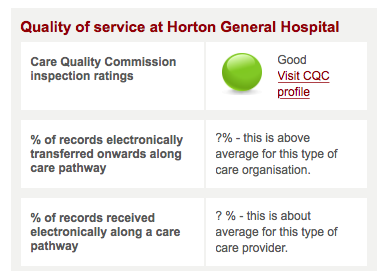It’s been a busy few weeks, as the Government came back from Conference season, and kicked their various schemes into high gear. In 2016, we’ll see data sharing across the NHS and Government taking up time: care.data may become a ministerial playbook.
Your support is greatly appreciated; and thanks to you and your loved ones at this time of year. But here’s where we are at the moment, if you wish to delay Christmas cheer just a little longer:
Care.Data.
Care.Data’s still suspended while Dame Fiona Caldicott tries to unwrap Tim Kelsey’s leaving present. The programme will enter 2016 as it left 2014: still digging in deeper. A new leadership for care.data was an opportunity to change that approach.
We’ve heard secondhand that the a new Senior Responsible Owner, obliged to hold this poisoned chalice, has been handpicked from the few loyal bag carriers left in the care.data bunker. Which means he’ll have repeatedly made valiant attempts at defending the inept and the ill considered. Indeed, the job description practically required blindly ignoring the fact that the ship was sinking until bailed out by his boss. With the Admiral’s hat his to don, it’s interesting to see if it will be full steam ahead into the iceberg of public rejection, yet again.
Dame Fiona Caldicott’s review of consent reports at the end of January, with Ministerial decisions in the months after that. Past NHS management has been good at persuading ministers to put their reputation behind the publicly indefensible until it becomes evident, even to the Department of Health, that perhaps that was unwise. At the last Care.Data Advisory Committee meeting, it was grudgingly admitted that the September roll out was halted by Jeremy Hunt himself…
Given Cabinet level discussions about data sharing, and the scope of opt-outs and consent, 2016 should be a busy year for data in the NHS and beyond. It seems some see care.data as a model to be copied. As always, the first question is whether the Government or NHS England wishes to constructively engage, or cower in a corner and ignore those who will point out necessary implementation changes. That choice is entirely up to them.
Your Right To Know
The CoverUp Commission has found that the public quite like the ability to request copies of Government documents in acts of citizen driven focussed transparency. Thank you for helping with that…
MedConfidential submitted a brief note of our own experiences of FOI, and also a saveFOI.uk submission of 260 different successful FOI requests (or outcomes from multiple requests), many submitted by you and others. SaveFOI.uk submission asked a simple question: Which of these questions does Lord Burns think shouldn’t have been answered?
Power likes secrecy, and “Burns it” would have been a common refrain in Tim Kelsey’s archipelago of NHS England. Freedom of Information is how the details of care.data were forced to be published. The deep veil of official secrecy continues to hide the bulk of Tim Kelsey’s legacy, which hopefully will start to burn up over time.
Not everyone gets to be an astronaut.
Everyone in the NHS wants to help improve the health of the nation, but that’s not the same thing as giving Direct Care. In the same way, that lots of people helped put a man on the moon, without being an astronaut. Every child eventually learns that not everyone gets to be an astronaut; and sometimes it’s a hard transition.
Tim Kelsey, who wanted all to sell medical records before his term was out, leaves NHS England today to take up a new post in Australia, but assured us he “will be back”.
Transitioning to consensual, safe and transparent data handling practices is as important for a hospital as good cleaning or sterile instruments – and the same thing happens when you disregard it too much. “Sufficient” cleaning is too much of a burden until it’s self-evident that it was too little, and harm occurs. Hopefully, in 2016, NHS England will learn about data hygiene and air quality. The astronaut programme had the literal version of the same problem. Will there be a systematic response to a politically driven digital-MRSA infecting the NHS and beyond? If the problem is left to go away of its own accord, it always comes back.
Consensual, Safe and Transparent Christmas sharing
It’s been a busy few months, but we’re still here, and would like to continue to be. If you wish to support our work, a donation is always greatly appreciated.
With best wishes to and your loved ones for Christmas and for the new year. May 2016 bring consensual, safe and transparent data flows throughout the NHS and beyond.
See you next year – we really couldn’t do this without you. Best wishes to one and all.
Sam and Phil

 Created automatically off care provider systems, this should give a measure of how widely EHR transfer is used, rather than how often it could be used.
Created automatically off care provider systems, this should give a measure of how widely EHR transfer is used, rather than how often it could be used.